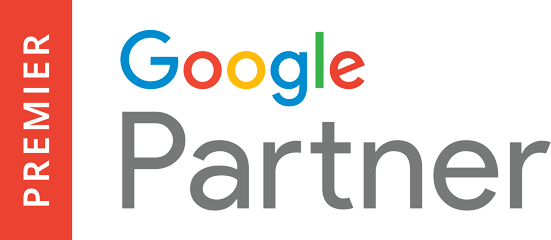There are few marketing fails quite as spectacular as Willy’s Chocolate Experience recently held in Glasgow. Advertised as “a day of pure imagination and wonder,” the unlicensed event ended with children’s tears, demands for refunds, and calls to local police. Naturally it’s taken the internet by storm.
Complete with AI fabrications, insufficient supplies, and a lack of quality control process, the Wonka Experience was doomed from the start. But as entertaining as such a failure can be, the event itself has major lessons for marketers. After all, there’s no better learning than failure and this one is rife with it. Let’s take a look at where this event went wrong and what its shortcomings have to teach us.
About the Wonka Experience
The Wonka Experience had all the elements of a promising event; an exciting idea built upon a well-known entity, a location in a big city, and a sizeable audience willing to pay the £35 entry ticket. Event organisers, House of Illuminati, rented a large warehouse, hired live actors, and built momentum with a lead-up digital campaign. The timing was ideal, capitalising on success from the recently released Wonka film produced by Warner Bros.
What guests arrived to was an alarming scene. The spacious venue was sparsely decorated, with a couple mushrooms, a small bounce castle, and uncovered cafeteria tables. Candy themed decorations were scattered around black floors and a tablecloth-sized “photobooth” backdrop clung to the wall with exposed tape. Live actors appeared in shabby costumes, armed with nonsensical AI generated scripts. As for the sweets, children received just two jellybeans and a third of a cup of limeade. So much for the factory fantasy.
Ramifications were swift. Families who’d travelled hours to attend left after minutes, requesting refunds. Shouting matches began and local police were called to the scene. The event was shut down just hours after launch.
Social media has been flooded with accounts of horror, much to the delight of onlookers. The Wonka Experience may have ended, but its legacy will live on for years.
Where the Wonka Experience Went Wrong
There are many reasons this went wrong, but three in particular stand out from a marketing POV. These include an overreliance on AI, a failure to meet consumer expectations, and a lack of communication between teams.
Overreliance on AI
AI has emerged as a dominant force in the industry. A saviour to resource-strapped teams. It may be powerful, but like any tool, it requires a degree of supervision. What’s clear from the event marketing alone is that there was no one at the helm.
On first glance all of the marketing visuals appear to have been created using AI technology. From visual posters and social copy through to the event description itself, all of the creative has the stamp of AI generation. That’s in part because it contains common errors. Social posts advertising the event are literally littered with spelling mistakes. One poster promises “cartchy tunes, exarserdray lollipops, and a pasadise of sweet teats”. Just one glance over the image and any editor would suggest a restart.
The creators also generated a performance script entirely from AI. According to paid actors, the 15 page story was utter nonsense, containing an unknown villain who lived within the factory walls. The story of Wonka is well-known, begging the question why this alternative telling was found to be a suitable replacement.

Leveraging AI isn’t where the experience went wrong but trusting it to do all of the work correctly the first time is. With just a little guidance and edits from an actual human being, this story might not have caught our radar.
A Failure to Meet Consumer Expectations
Wonka is an entity which conjures specific imagery in the public’s mind. Close your eyes and you’d likely imagine an abundance of candy, flowing melted chocolate, bright colours, and wildly imaginative sets. In short, exactly what the AI generated images reinforced. The visuals look amazing, however they set up unrealistic expectations in the consumer’s mind. The set designers couldn’t possibly achieve what was shown in AI imagery because of the limited resources allocated.
The price point also drove certain expectations. A perceived value-for-money threshold. At £35 per ticket, one would expect appealing spectacles and sample tasty treats. Instead there was nary a chocolate bar in sight.
Finally, adverts suggested the experience would take around an hour to enjoy, but this too was a misrepresentation. After one quick glance around disappointed guests left in some cases after five minutes. To be fair, all of the elements were there. There were decorations, candy and actors, but none of it at the scope or scale the audience was promised. Had this been a themed day in a primary school it would have been hailed as a success. Instead the event is making international news as one of the biggest farces in marketing history. It’s all because the creators failed to match or even temper the consumers expectations ahead of time. They made promises they couldn’t keep.
Disconnected Teams
Taking a step back, it’s clear there was a mass breakdown in communications between various operational teams. The person using AI to write and create adverts was not in direct contact with the experiential team. If they were, there wasn’t a proper feedback loop implemented to warn of a disconnect.
Next we need to talk about the supplies. The organisers knew how many guests to expect from the number of tickets sold. This makes it all the more baffling how the Wonka experience wasn’t prepared with more confections. It signals another breakdown between organisers and the supply chain.
Then there’s the actors, the people in charge of building hype, who received scripts just a day before the event. They were given little time to contribute to the story, let alone memorise their lines. How can a team of staff expect to deliver at their best with such little time to prepare?
What this showcases is that without a master plan and consistent communication between all teams, projects like these are dead on arrival. The lack of a feedback loop, or quality control of any kind explains how the Wonka Experience sunk to this infamous low.
Takeaways from the Wonka Experience
Beyond a chuckle, the failed Wonka experience taught us a few things:
- There’s a large emphasis on experiences in our current society, driven by social media. People will flock to them, but equally, have no qualms detailing their true experience, good or bad. The virality of this story shows just how far bad news will travel.
- AI is best used as a starting point for inspiration, then edited by skilled workers. It’s far better to create marketing content with assets you actually have than those you don’t.
- Set proper expectations on what you can deliver. If the audience’s assumptions are out of line, temper them to match reality. It’s better to under promise and overdeliver than to shoot for the stars and fall flat.
- Collaborate with your team. You need to run ideas by other people with enough time to change course. Quality assurance is about building layers of protection through careful review at various stages of planning. Had someone at the Wonka Experience changed venue, given actors more time, secured more supplies, or run a practice event, it all could have gone down differently.
Failing to heed these warnings might make you the next viral hit for all the wrong reasons. Don’t get lost in a land of pure imagination, just focus on a proper plan. There’s nothing to it.









